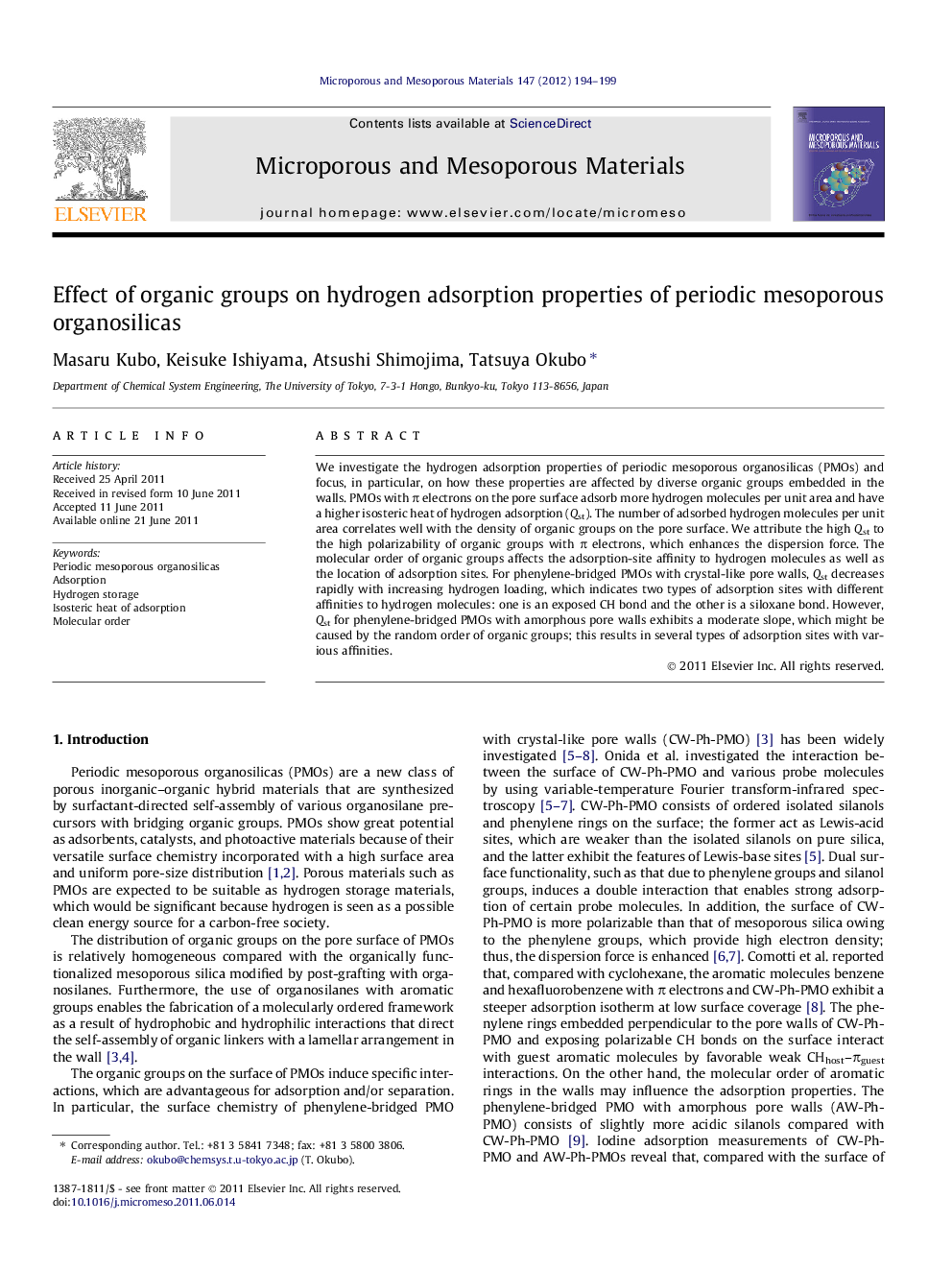| Article ID | Journal | Published Year | Pages | File Type |
|---|---|---|---|---|
| 74588 | Microporous and Mesoporous Materials | 2012 | 6 Pages |
We investigate the hydrogen adsorption properties of periodic mesoporous organosilicas (PMOs) and focus, in particular, on how these properties are affected by diverse organic groups embedded in the walls. PMOs with π electrons on the pore surface adsorb more hydrogen molecules per unit area and have a higher isosteric heat of hydrogen adsorption (Qst). The number of adsorbed hydrogen molecules per unit area correlates well with the density of organic groups on the pore surface. We attribute the high Qst to the high polarizability of organic groups with π electrons, which enhances the dispersion force. The molecular order of organic groups affects the adsorption-site affinity to hydrogen molecules as well as the location of adsorption sites. For phenylene-bridged PMOs with crystal-like pore walls, Qst decreases rapidly with increasing hydrogen loading, which indicates two types of adsorption sites with different affinities to hydrogen molecules: one is an exposed CH bond and the other is a siloxane bond. However, Qst for phenylene-bridged PMOs with amorphous pore walls exhibits a moderate slope, which might be caused by the random order of organic groups; this results in several types of adsorption sites with various affinities.
Graphical abstract.Figure optionsDownload full-size imageDownload as PowerPoint slideHighlights► Hydrogen adsorption properties of various periodic mesoporous organosilicas (PMOs) were investigated. ► PMOs with π electrons on the pore surface exhibit high affinity to hydrogen molecules. ► Molecular orders of organic groups affect the affinity to hydrogen molecules as well as the location of adsorption sites.
